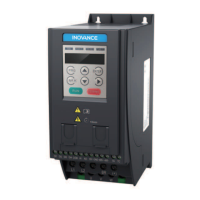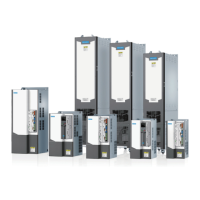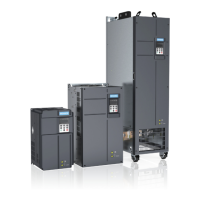Electrical Installation
‑44‑
Table 2–3 Function description of control circuit terminals
Type
Terminal
Symbol
Terminal
Name
Function
Power
supply
+10V‑GND
External +10 V
power supply
The terminal is used to provide +10 V power supply
to an external unit with the maximum output
current 10 mA.
Generally, it is used to power an external
potentiometer with resistance ranging from 1 kΩ to
5 kΩ.
+24V‑COM
External +24 V
power supply
The terminal is used to provide +24 V power supply
to external devices. Generally, it is used to power
the DI/DO and external sensor.
The maximum output current is 200 mA
[Note 1]
.
OP Input
terminal for
external
power supply
It is connected to +24V by default.
When DI1 to DI5 are driven by external signals, OP
must be disconnected from +24 V and connected to
the external power supply.
Analog
input
AI1‑GND AI1
Input voltage range: ‑10 VDC to + 10 VDC
Input impedance: 22 kΩ
AI2‑GND AI2
The terminal supports voltage input (default),
current input, and temperature input.
When used as voltage/current input, the terminal
supports 0 V to 10 V, ‑10 V to +10 V, or 0 mA to 20
mA, and supports 12‑bit resolution and the
correction accuracy of 0.3%.
The input impedance is 22 kΩ for voltage input and
500 Ω or 250 Ω for current input, which is set by S2
and S3 DIP switches
Note [2]
.
Digital
input
DI1‑OP DI1
Photocoupler isolation and bipolar input
Input impedance: 1.72 kΩ
Voltage range for effective level input: 9 V to 30 V
DI2‑ OP DI2
DI3‑ OP DI3
DI4‑ OP DI4
DI5‑ OP DI5
Besides features of DI1 to DI4, DI5 can also be used
for high‑speed pulse input.
● Input impedance: 1.16 kΩ
● Maximum input frequency: 100 kHz
● Operating voltage range: 15 V to 30 V
Analog
output
AO1‑GND AO1
The DIP switch on the control board is used to
determine voltage output (default) or current
output.
● Operating voltage range: 0 V to 10 V
● Output current range: 0 mA to 20mA

